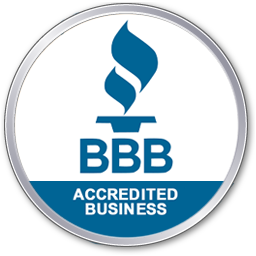Executive Summary
- After the drying process, water damage restoration requires a professional to inspect for residual moisture, remove unsalvageable materials, and initiate repairs to achieve structural integrity.
- If you notice warped materials, musty odors, or visible stains that may indicate potential mold growth, you may have lingering water damage.
- Mold often develops within 24 to 48 hours after organic materials are exposed to water, but thorough drying and dehumidification can help prevent its spread.
- Many insurance policies cover sudden and accidental water damage, but may exclude gradual issues or specific sources—consult your insurance company to understand coverage restrictions.
Understanding the Post-Drying Water Damage Restoration Process
Several steps follow water removal and the drying phase in water damage restoration to ensure all moisture has been eliminated. For example, reliable restoration contractors will inspect for residual signs of water damage, ranging from warped materials to musty odors, which can help pinpoint areas with hidden moisture and a higher likelihood of mold growth. They will also remove unsalvageable materials, clean the area, and perform repairs to address structural damage before implementing preventative measures to avoid future water issues.
Choosing a reputable water damage restoration company ensures an efficient restoration process; therefore, be sure to research local service providers and verify their credentials. Even with the help of a reliable professional, property owners should be prepared to plan, make informed decisions, and collaborate with contractors to create a safe and habitable home.
Although each situation is unique, the guide below will provide a clearer understanding of what happens after the initial drying portion of the water damage restoration process. It will also help you tailor your expectations for costs and potential interactions with your insurance company.
Inspection and Damage Assessment
Once standing water is removed and drying is complete, the next stage in the water damage restoration process typically involves a thorough inspection to ensure that all moisture has been eliminated. During this step, restoration contractors will also assess structural damage and document their findings in a manner that is presentable to the client’s insurance provider. The following aspects of the inspection make this step crucial for determining the extent of repairs needed and preventing future issues.
Identifying Residual Water Damage
Even after drying, residual water damage can persist and manifest as:
- Warped or puffy structural materials
- Peeling or bubbled-up paint
- Musty odors
- Visible water stains
Noticing the signs above may suggest that moisture remains in that area, which can compromise structural integrity and lead to mold growth, which may present health hazards.
Detecting Potential Mold Growth
If it is given moisture and an organic material to feast on, such as wood or cellulose insulation, mold can begin to develop within 24 to 48 hours. Since high humidity and residual moisture from water damage can create an ideal environment for mold spores to reproduce, getting a comprehensive inspection and using tools like moisture meters and dehumidifiers can help prevent mold proliferation. An environmental remediator should thoroughly check behind walls, under floorboards, and in other hard-to-reach areas to ensure they are dry.
Removal of Unsalvageable Materials
After assessing the damage, any porous materials that cannot be adequately dried, cleaned, or repaired must be removed to prevent the development of fungi, such as mold and xylophagous fungi, which cause wood rot and weaken structural components. In turn, this safeguards the health of inhabitants. Some examples of potentially unsalvageable materials include:
- Drywall below the flood line
- Soaked carpet padding
- Waterlogged insulation
- Severely damaged personal items like wet rugs, fabrics, or damp books
A qualified restoration contractor can remove these materials, ultimately facilitating the drying process and helping prepare the area for reconstruction efforts.
Cleaning, Sanitizing, and Deodorizing
After removing unsalvageable materials, the affected areas require thorough cleaning and sanitization to ensure they are safe and healthy for the building’s inhabitants. A qualified professional should use specialized equipment and cleaning agents to address bacteria, mold spores, and odors.
Equipment for Odor Elimination
Some examples of tools that professionals may use during the cleaning stage to deodorize the area are:
- Air scrubbers – These machines filter indoor air to remove particles, chemicals, and gases that contribute to unpleasant odors.
- Ozone generators – These tools utilize ozone gas to neutralize bad smells. They can also help kill mold and bacteria to cultivate a safer, odor-free environment.
The deodorizing machines above play a vital role in the water damage restoration process by removing odors and helping to sanitize the environment after drying is complete, ultimately promoting a healthier living space following water damage.
Repairs and Reconstruction
After the area has been dried and thoroughly cleaned, a qualified professional can begin repairing and reconstructing damaged areas to restore the property’s structural integrity. Some steps involved in the reconstruction process may include:
- Replacing drywall and insulation
- Installing new flooring
- Repairing or replacing electrical and plumbing systems
A reputable restoration contractor will ensure that all repairs meet safety standards while restoring the home or building to its best possible condition.
Water damage restoration is a complex process, and it requires an expert company to do it right. Alpha Environmental provides peace of mind with our expertise.Trust The Professionals for a Thorough Water Damage Restoration
Preventive Measures for Future Water Damage
To mitigate the risk of future types of water damage, a professional restoration company can also help you safeguard your home. For example, they can help you install water leak detection devices and ensure proper drainage systems are in place.
Even if your property has these protective measures established, you should still have a professional regularly maintain your gutters and downspouts, as well as conduct routine inspections of your roofing, plumbing, and HVAC systems. Doing so can help prevent water intrusion and minimize potential damage.
Understanding Costs and Insurance Considerations
The extent of the water damage determines the required repairs and, therefore, the final cost of the restoration. Water damage restoration costs can span a wide range from as low as $350 for a simple, small-scale remediation to as much as $50,000-$250,000 for large-scale contaminated water extraction and extensive repairs.
Homeowners insurance typically covers sudden and accidental water damage, such as that caused by a pipe burst or sewage backups. However, damage resulting from gradual leaks or lack of maintenance is usually not covered. It is essential to review your policy and consult with your insurance company to understand your coverage and any applicable deductibles.
Choosing a Reputable Restoration Company
It is essential to choose an experienced and trustworthy water damage restoration company to ensure a comprehensive recovery with lasting repairs. A reputable company will show diligence early on in the restoration process by conducting a thorough evaluation of the property damage and compiling an extensive plan before proceeding with restoration efforts.
Key Factors to Consider
Some factors you should consider as you are researching local service providers include:
- Licensing and certifications – Ensure the company holds proper licenses and certifications in your state. For example, Alpha Environmental operates under Oregon Construction Contractors Board License No. 152125 along with being IICRC certified.
- Experience – Leverage online reviews and local references to select a company with a proven track record in water damage restoration.
- Comprehensive service offerings – Opt for providers offering start-to-finish solutions, including assessment, water extraction, drying, sanitization, and repairs, to streamline the entire process.
- Access to advanced equipment – Verify the use of modern, industrial-grade equipment, such as dehumidifiers, air movers, and moisture detection tools, to ensure efficient and thorough restoration.
- Emergency response – Severe water damage needs to be addressed in a time-sensitive manner. Therefore, it is advisable to select a company that offers 24/7 emergency services to minimize the risk of further damage.
- Insurance assistance – A reputable company should be able to assist with insurance claims by providing the necessary documentation and facilitating direct communication with insurers to simplify the process.
- Transparent pricing – Request detailed, written estimates that outline the scope of work and associated costs. Compare these values with industry standards.
In addition to the steps above, you should inquire about any warranties or guarantees that may be offered for the restoration work.
Homeowner’s Role in Restoration
A homeowner’s proactive involvement in the restoration process can significantly influence the final outcome. For instance, by initiating the water damage mitigation process as soon as signs of water damage are detected, a property owner can prevent further issues and expedite the insurance claims process.
Aside from contacting certified experts as soon as possible, some other tasks that may fall on homeowners during water damage restoration are:
- Safely and proactively relocating belongings from impacted areas
- Obtaining written estimates from multiple contractors
- Keeping records for proper documentation
- Reviewing insurance coverage to ensure appropriate coverage
Homeowners should also implement preventive measures, such as sealing minor leaks in the home’s foundation and installing a sump pump in areas prone to flooding, like basement laundry rooms with washing machines.
By actively participating in the tasks above, homeowners can contribute to the efficiency and success of the overarching water damage restoration process.
Alpha Environmental Offers Comprehensive Water Damage Restoration
Each water damage restoration situation is different, with varying drying times and approaches. Nevertheless, most scenarios involve similar steps following the drying stage: inspection, removal of irreparable materials, sanitization, reconstruction to address structural damage, and preventive measures to avoid future issues.
To ensure the water damage restoration is being carried out in the most effective way possible, you should employ a reliable restoration contractor like Alpha Environmental. If you notice signs of water damage, such as peeling paint or musty odors, our team can provide comprehensive services that address potential mold growth, structural repairs, and minimize health risks. We can also work with your insurance company to ensure they have the necessary documentation to support your claim.
Contact Alpha Environmental to get expert-level water damage restoration services.




